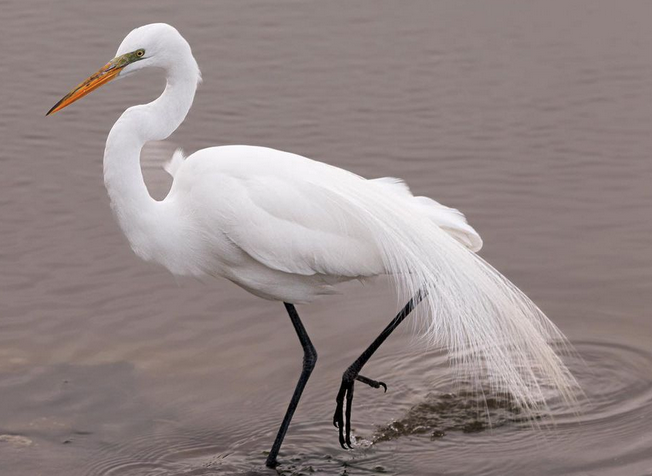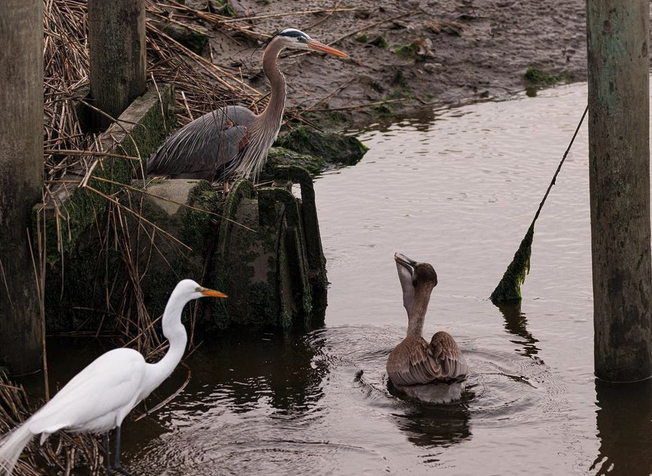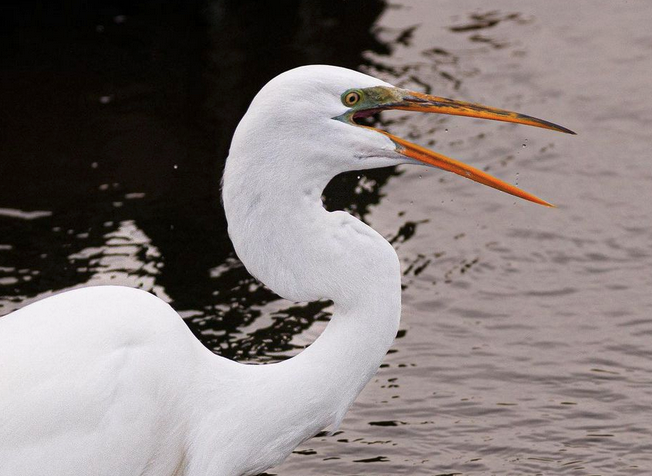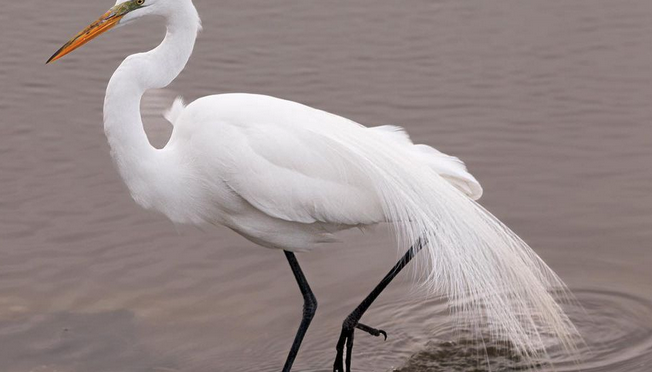By Sally Siko
Great Egrets are a common sight here in the Carolinas. Almost as as ubiquitous to the landscape as a Northern Cardinal unfortunately can lead us to kind of ignore these beauties.
But as it goes so often with birds, keeping a sharp eye on all the species which cross our paths can lead to some delightful moments.
In this case, a splendid display of a Great Egret coming into breeding plumage!

I photographed this handsome Egret getting harassed by a jerk Brown Pelican (he was being a total bully, even having the gall to go after a large Great Blue Heron who was minding his own business lol!) during my birding tour this past weekend at the Huntington Beach State Park in Murrells Inlet South Carolina.
Normally these guys are pretty cool to see but when their long plumes grow out they turn into something like a white peacock of the water.
Did you know that these these majestic birds were nearly hunted to extinction?This was due to the demand of those elegant white breeding plumes in the late 1900s. A now familiar icon of the Audubon Society, public awareness of this species rapid decline was the flash point which sparked the fist bird conservation movements in the United States.Today, these stately birds are thriving and are happily found searching for food throughout much of the U.S.



